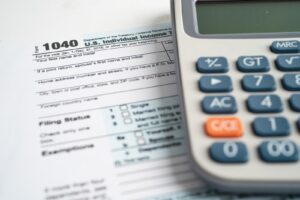After some changes to federal laws in 1998 and 2005, the statute of limitation on student loans has been dissolved (with some very limited exceptions), which means that you can no longer have your student loans discharged when you file for bankruptcy. Many people wonder whether they are eligible for a student loan discharge when they can’t afford to make student loan payments, or when they are undergoing some major life changes.
The good news is, the federal government will review your request and grant a discharge of your student loans in some cases. However, you will need to make a solid case and provide supporting documents to have your application reviewed and your loans discharged. Since there is no statute of limitation for a student loan, you’ll have to find other ways to come up with a student loan resolution.
Government’s Definition of Statute of Limitation for Student Loans
The Federal Student Aid office of the U.S. Department of Education defines the statute of limitation for student loans as follows:
By virtue of section 484A(a) of the Higher Education Act, statute of limitations of no kind now limits Department’s or the guaranty agency’s ability to file suit, enforce judgments, initiate offsets, or other actions, to collect a defaulted student loan. Regardless of the age of the debt, statutes of limitation are no longer valid defenses against repayment of a student loan.
Other Options for a Resolution with Your Student Loan
If you’re falling behind on student loan payments or are just struggling financially and don’t think you can pay back your student loans within a reasonable amount of time, you do have some options available. Your options will depend on your specific situation, but in many cases, you can set up a new repayment program directly with the U.S. Department of Education so that you don’t end up defaulting on your student loan.
You may also be eligible to apply for a loan consolidation program or a loan modification program so that your student loan payments become that much more affordable. If your student loan is already in default, you can go through a loan rehabilitation program so that the defaulted loan doesn’t have a significant impact on your credit score and is removed from your credit report within a reasonable amount of time.
You can find more information about how to address your defaulted student loan on the U.S. Department of Education’s Federal Student Aid website here.








